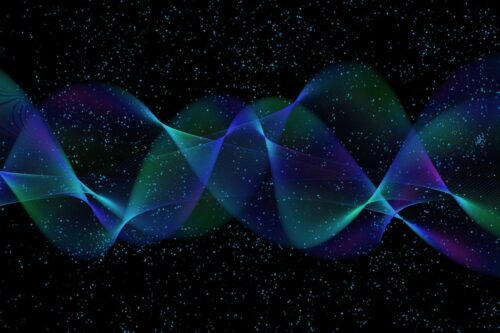Image Courtesy of Pixabay.
In 1933, Nobel Prize-winning chemist Sir William Bragg said, “Light brings us the news of the Universe.” Though it would take decades before scientists better understood the properties of light, researchers today are devising ways to utilize this resource to store information by uniting information theory and quantum mechanics, a subfield of physics that governs the behavior of photons, or light particles.
Among the general public, anything that includes the word “quantum” elicits a degree of awe. Even Einstein was troubled by one of the theoretical implications of quantum mechanics, which he called “spooky action at a distance.” Today, Einstein’s boogeyman is called entanglement. When two particles are entangled, their quantum states, which may include properties like geometric orientation, angular momentum, and energy, are inextricably linked. A change in the state of one particle will immediately affect its twin. For example, consider a pair of entangled mittens: one is given to a lab assistant named Bob, and the other to his partner, Alice. No attempt is made to observe either mitten. Bob is then sent to a neighboring solar system. Up to this point, nobody in the universe knows the handedness of either Alice’s or Bob’s mittens. In fact, by the postulates of quantum mechanics, their handedness will be indeterminate until they are observed. If this experiment was repeated many times, it would reveal that when Alice observes her mitten, she will have a right-handed mitten half the time, and a left-handed mitten the other half. Eerily, Bob’s mitten will instantaneously acquire the opposite handedness, even though he’s two million light years away from Alice.
These same principles of entanglement have been used to send data over thin air. In 2015, a research team in Vienna transmitted information by changing the relative angular momentum, or “twistiness,” of entangled pairs of photons. In quantum mechanics, angular momentum can only take on values in discrete quantities, separated by a constant ‘step size.’ These entangled particles stored information by acting analogously to computer bits, which can only have a value of zero or one. In the experiment, each twist served as an alternative channel of communication, enabling ultra-high-speed data transmission.
A group of physicists from the Beijing Institute of Technology (BIT) recently expanded on this research to create an unprecedented storage system. Instead of transmitting information via distinct light channels, they stored several unique data sets at a time by creating holograms made of entangled photon pairs. Though holograms seem to be a quintessential element of science fiction, they already have applications in everyday life. Used as a security feature in credit cards, passports, and banknotes, holograms are stacks of slightly misaligned images that are difficult for a computer to read. The physicists generated holograms made of twisted, entangled photon pairs by using β-barium borate crystals to manipulate the relative angular momentum between the particles, creating corkscrew patterns of light that resemble rotini pasta. To prove their setup worked, the researchers encoded words in the holograms and used twisted light to reconstruct the data by measuring the coincidence between the particles’ angular momentums.
By increasing the number and diversity of twists in a single hologram, the system securely encrypted information since the odds of guessing the degree and direction of the twisted light’s path became very low. For instance, seven distinct twists, which is a relatively small system, led to millions of potential combinations.
Many quantum technologies are sensitive to noise. However, the researchers asserted that entanglement can diminish the effect of classical noise sources, which include mechanical vibrations and thermal fluctuations. Thus, the decrypted output was of a higher quality compared to other similar systems.
This technology, however, is still in its infancy. Utilizing six forms of entangled light, the group was able to decode an image of the acronym “BIT” by measuring the orbital angular momentum states of the particles over the course of twenty minutes, which is far from practical. Fortunately, the group is optimistic that these difficulties can be overcome with improvements in quantum technology. Though holographic data storage is still in a nascent stage, today’s scientists are utilizing techniques that the founders of modern physics laid the groundwork for—but may not have even understood.

